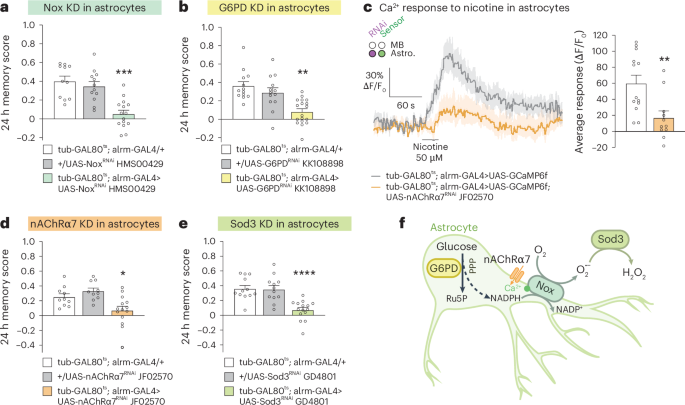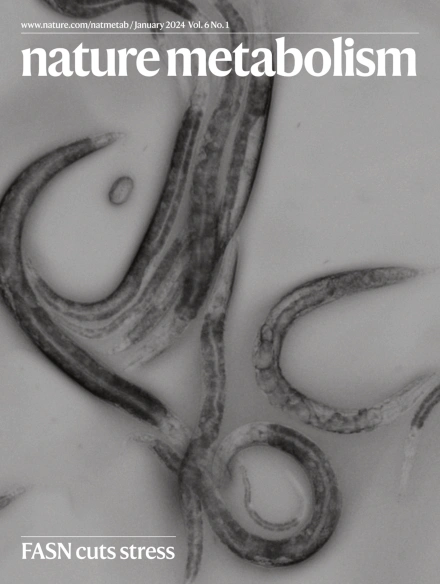Astrocyte-to-neuron H2O2 signalling supports long-term memory formation in Drosophila and is impaired in an Alzheimer’s disease model
IF 18.9
1区 医学
Q1 ENDOCRINOLOGY & METABOLISM
引用次数: 0
Abstract
Astrocytes help protect neurons from potential damage caused by reactive oxygen species (ROS). While ROS can also exert beneficial effects, it remains unknown how neuronal ROS signalling is activated during memory formation, and whether astrocytes play a role in this process. Here we discover an astrocyte-to-neuron H2O2 signalling cascade in Drosophila that is essential for long-term memory formation. Stimulation of astrocytes by acetylcholine induces an increase in intracellular calcium ions, which triggers the generation of extracellular superoxide (O2•–) by astrocytic NADPH oxidase. Astrocyte-secreted superoxide dismutase 3 (Sod3) converts O2•– to hydrogen peroxide (H2O2), which is imported into neurons of the olfactory memory centre, the mushroom body, as revealed by in vivo H2O2 imaging. Notably, Sod3 activity requires copper ions, which are supplied by neuronal amyloid precursor protein. We also find that human amyloid-β peptide, implicated in Alzheimer’s disease, inhibits the nAChRα7 astrocytic cholinergic receptor and impairs memory formation by preventing H2O2 synthesis. These findings may have important implications for understanding the aetiology of Alzheimer’s disease. Rabah et al. discover an astrocyte-to-neuron hydrogen peroxide signalling cascade, which is crucial for long-term memory formation in Drosophila. This signalling is found to be inhibited by amyloid-β peptide, suggesting a link to Alzheimer’s disease.


求助全文
约1分钟内获得全文
求助全文
来源期刊

Nature metabolism
ENDOCRINOLOGY & METABOLISM-
CiteScore
27.50
自引率
2.40%
发文量
170
期刊介绍:
Nature Metabolism is a peer-reviewed scientific journal that covers a broad range of topics in metabolism research. It aims to advance the understanding of metabolic and homeostatic processes at a cellular and physiological level. The journal publishes research from various fields, including fundamental cell biology, basic biomedical and translational research, and integrative physiology. It focuses on how cellular metabolism affects cellular function, the physiology and homeostasis of organs and tissues, and the regulation of organismal energy homeostasis. It also investigates the molecular pathophysiology of metabolic diseases such as diabetes and obesity, as well as their treatment. Nature Metabolism follows the standards of other Nature-branded journals, with a dedicated team of professional editors, rigorous peer-review process, high standards of copy-editing and production, swift publication, and editorial independence. The journal has a high impact factor, has a certain influence in the international area, and is deeply concerned and cited by the majority of scholars.
 求助内容:
求助内容: 应助结果提醒方式:
应助结果提醒方式:


